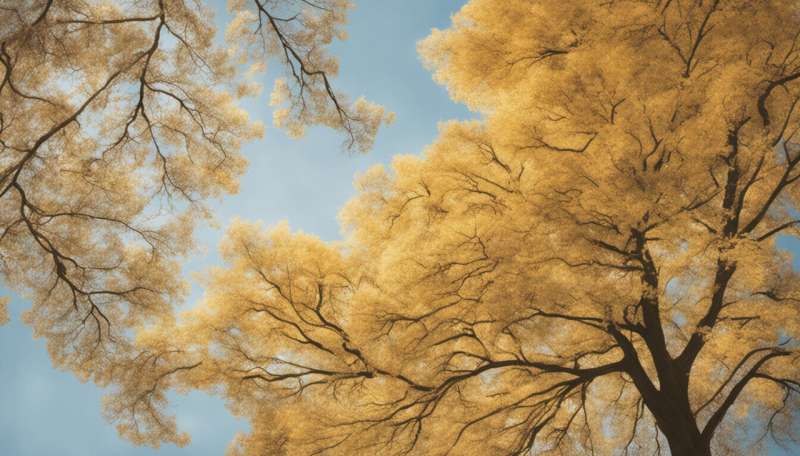Credit: AI-generated image (disclaimer)
Researchers from the Natural Resources Institute Finland (Luke) and the University of Krakow have revealed novel and unexpected insect vectors and host trees for the Dutch elm disease, a deadly and devastating fungal disease of elm trees. Global trade and climate change enhance the risk of new exotic insect and fungi introductions.
The researchers conducted the most comprehensive survey thus far on the fungal associates of hardwood-infesting beetles in Central Europe, and found Dutch elm disease pathogen (Ophiostoma novo-ulmi) from the elm-infecting beetles as well as from beetles on European ash (Fraxinus excelsior) and oak (Quercus robur). The result was unexpected, because until now only Scolytus bark beetle species attacking elm trees have been considered the main vectors of the disease.
"This study shows that the Dutch elm disease pathogen is hiding in a plain view, in association with such vector insects and host trees that have been neglected in previous studies. Our results suggest that the pathogen host and vector range in forest ecosystems in Europe is much broader than previously thought. It is clear that this finding complicates the Dutch elm disease eradication and control attempts even further," says Dr. Riikka Linnakoski from the Natural Resources Institute Finland (Luke).
In addition to this finding, the survey revealed other new beetle–fungus associations and several putatively novel fungal species. It also highlights how little information on the diversity of insect–fungal associations we actually have. Such baseline information is important for recognizing novel vector-fungi associations, which have the potential to cause serious forest damage in future.
Interactions between fungi and wood-boring forest insects are part of natural forest ecosystems. However, global trade and climate change have enhanced the risk of exotic insect and fungi introductions and rise of novel interactions with unpredictable implications. Such relationships include the Dutch elm disease, which pathogen O. novo-ulmi was accidentally introduced to Europe from Asia.
More information: Robert Jankowiak et al. Ophiostomatoid fungi associated with hardwood-infesting bark and ambrosia beetles in Poland: Taxonomic diversity and vector specificity, Fungal Ecology (2019). DOI: 10.1016/j.funeco.2019.02.001
Provided by Natural Resources Institute Finland























